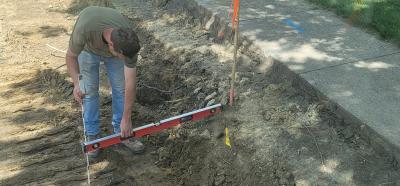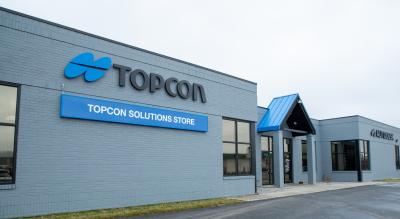Robert Berkstresser is in the crane business. He’s also in the towing business ... and the excavating business ... and the equipment rental business.
Berkstresser’s office sits on the property of his trucking operation and travel plaza, which is attached to his restaurant, appropriately named Berky’s Restaurant, which offers dinner specials every evening. Behind Berky’s and beyond the machine shop, Berkstresser’s campground climbs the side of a hill. To the left of that, equipment sits waiting to excavate more of his property –– which for Berkstresser and his company, Lee Hi, is just one more opportunity waiting to be uncovered.
Lexington, VA-based Lee Hi has about 100 employees, ranging from administrative and wait staff to crane operators and technicians, who, according to Berkstresser, enjoy their jobs because they never know what the next day will bring.
One of the opportunities Berkstresser has taken advantage of is the setting of modular homes, which makes up a large part of his crane business.
“Modular homes are not similar to mobile homes at all,” said Berkstresser over a recent lunch conversation at Berky’s. “A mobile home is built on a steel frame. A modular is a house that’s built of all wood and is built to good enough specs that you can wrap two cables around it and pick it up and move it.”
He noted that while piecing together a modular home, a contractor will build the basement and do the finish work, but he has a set crew come in just for the day to set the pre-built boxes.
Lee Hi crews have been using a Grove 70-ton TMS 870 truck crane and a 120-ton GMK 5120B, purchased from J.W. Burress Inc., to set the modular boxes. Berkstresser recently purchased a Grove 90-ton TMS 900E for the truck crane for the same purpose.
“With my 90-ton, you roll in [to a job site] and in 20 minutes you have the counter weights on and the crane set up, and you’re ready to set boxes,” said Berkstresser. “I had an old 80-ton, and it would take you a tractor trailer to haul all the pieces you have to take off just to be able to move it. And then, once you got in on site, it would take you a couple of hours to put it together.”
Lee Hi started setting modular homes about 10 years ago. “It was slow at first,” Berkstresser explained, “but most people who do modular home sets around here like my crews. We set so many modular homes that we now have special rigging that we put together just for raising roof sections.”
Last year, Lee Hi crews set a house that was worth approximately $350,000. Made of 11 boxes, the building stands at three stories high. In 2003, the company set 200 modular homes in total.
“The perception that modulars get sometimes is that they’re a double-wide, and they’re not. Some of the best techniques in the housing industry today, the modular industry created,” stressed Berkstresser. “To be able to pick up a 75 by 16 foot box with cables and set it over a foundation and not crack the sheet rock –– that’s a pretty well-built house. That’s a better built house than a stick-built house.
“There’s what I call a high-end retirement community here called Kendall. The first sections were all stick-built, but the last two sections were all modular units,” he continued. “They already had the existing community. The second sections had to be built in the middle of it and the community didn’t want crews to be there for two years. So with the modulars, crews came in and laid the foundations and we came in and set the first 16 boxes. While we were setting those, crews were laying the foundation for the next 11 boxes. In 60 days, I would say they finished the job.”
The most marketable asset of a modular home may be the amount of time it takes to build it. For this reason, Berkstresser raves about how quickly his crews move a crane onto a job site.
“[A contractor] is not paying us to run down the road at 35 miles per hour and then spend two hours putting the crane together at the job site,” he said. “An advantage of the TMS 900E is that it can travel 65 miles per hour down the road, allowing us to travel long distances.”
Lee Hi sets homes out to 120 miles away from Lexington –– north to Winchester, south to Wytheville, west to Lewisburg and Beckley, WV, and east Charlottesville, VA.
“We schedule pretty tight, so we can set a house today and another house tomorrow,” Berkstresser said.
To keep his cranes up and running and to stay on schedule, Berkstresser relies on the staff of J.W. Burress.
“The first crane we bought from Burress was a 1972 30-ton Grove. The thing we found out real fast was that when you had a Grove crane, and you needed a seal kit, you could get it the next day,” he said. “Even if you have a 30-year-old crane, you can get parts and service. That’s a real advantage of Grove.
“And, the relationship I have with Dante [Villa, J.W. Burress sales representative] is like any relationship. We know we can always sit down and work out any problem. And the other part –– and it’s the most important to us –– is that we know we can pick the phone and call if we have a problem in the field. Most of the time, the Burress staff can work us through that problem or make a field fix,” he said.
Berkstresser also uses his heavy equipment on another opportunity that opened up for him in Lexington: a safety patrol. “We’re the first private contractor for the state of Virginia and it’s in test mode. They’re trying to determine from the number of contacts we make if the [program will continue],” said Berkstresser.
His patrol crews work from about exit 195 on I-81, where the company is located, to the next bridge exit. “We work from 12 noon to six in the evening.” Berkstresser said. “[The program] keeps the traffic moving in construction zones.”
The crews give motorists gas, pump and change tires, and if an accident occurs, help with cleanup.
For example, he noted, everyday at noon VDOT crews do blasting on a bridge a few miles from Lee Hi headquarters. Berkstresser’s crews go out on trucks equipped with message boards and stop traffic each day.
“The whole project is to limit the number of accidents they have after an initial incident,” said Berkstresser. “If something’s broke down or wrecked, [Lee Hi crews] work to make sure there’s not another accident because somebody runs off the road and into the vehicle that’s sitting there.”
A few years ago, he noted, there was a 24-vehicle wreck at Buffalo Creek bridge on I-81. “The bridge iced over and there was a minor accident. There were troopers pulled over with the first car and a truck came through and he touched his brakes and so on .... I think there were four fatalities and 25 injured.
“It was horrifying, but as far as timing and emergency services, [the cleanup] went very well. There were hundreds and hundreds of gallons of diesel. So, of course, you can’t just start jerking things apart. You have to get that washed off –– and it’s in the middle of winter. You’ve got to be careful as you pull these pieces apart that you don’t get sparks,” he explained.
But Berkstresser’s heavy equipment capabilities don’t stop there. As a small excavating contractor, Lee Hi’s operators also excavate house sites, driveways and roads.
“We do a lot of our own excavating here. I can tell you when I built this [truck] lot and I was ready to pave it, I bought a paver and we did it ourselves.”
For many of his excavating jobs, Berkstresser often employs a Daewoo excavator with a Tramac hammer, both purchased from Villa and J.W. Burress.
Berkstresser noted that at Lee Hi, every day is different. “Our operators have to be willing to do other things. Here you might be setting a house one day or you might be transferring a load, and the next day you’re in the machine shop. Or, you’re running the hammer.”
Key to Lee Hi operations is the office team of Darrell Burke and Dreama Wallace who run the crane, excavating, wrecker and trucking businesses, said Berkstresser. “All of our customers will tell you that Darrel and Dreama go overboard. The loyalty and dedication of the employees is what makes it all come together. They always strive for excellence and take care of the customer with professionalism.”
But most important, he finished, while sitting beneath refurbished toy cars he fixed up in his free time, “we try to under promise and we strive to over deliver.”
For more information on Lee Hi, visit www.leehi.com. For more information on J.W. Burress, visit www.jwburress.com.
This story also appears on Crane Equipment Guide.
Today's top stories















